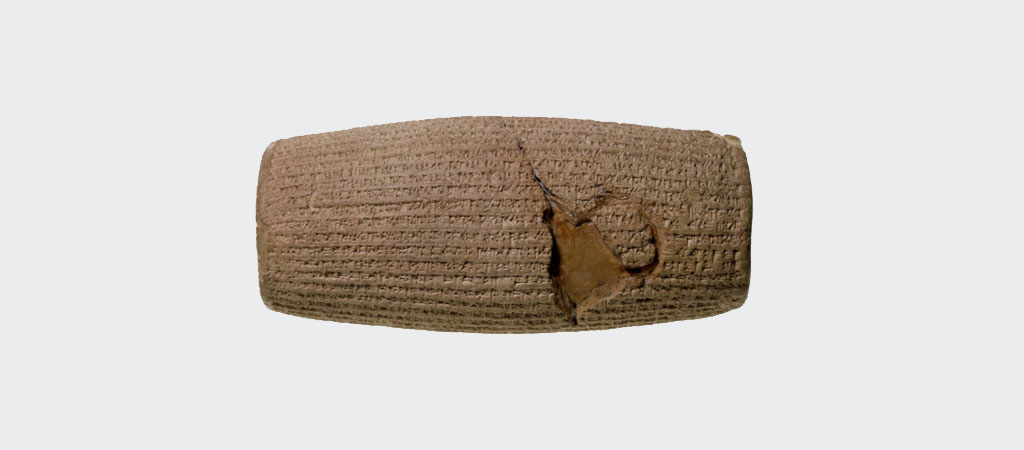The Cyrus Cylinder is a declaration written in Akkadian cuneiform script on a clay cylinder which is now housed in the British Museum in London. It records the words of King Cyrus, a Persian ruler who reigned during the 6th century BC. Cyrus the Great (as he is known to history) founded the Achaemenid empire and changed the course of Ancient Near Eastern history by defeating the last Babylonian king, Nabonidus, bringing about the fall of the Babylon.
For scholars the cylinder is a small but important source of information about the Ancient Near East. It marks a pivotal point in the Old Testament story, when power switched hands between one mighty empire and another. And while the document doesn’t name Jewish places or individuals directly, it does give intriguing details that are consistent with the Bible narrative.
The last days of Babylon are depicted in the Bible with the story of King Belshazzar’s feast (recounted in Daniel 5), in which Daniel interpreted a vision for the king. Belshazzar was so grateful that he “gave the command, and Daniel was clothed with purple, a chain of gold was put around his neck, and a proclamation was made about him, that he should be the third ruler in the kingdom.” (Daniel 5:29, ESV)
Why third ruler? In the story of Joseph, which is in some aspects a parallel, when Joseph successfully interpreted Pharaoh’s dreams he was made second ruler, according to Genesis 41:40. Interestingly, however, the Cyrus Cylinder text claims that King Nabonidus put his first-born son (Belshazzar) in charge of Babylon as regent. This background knowledge (not indicated in the biblical text) provides a simple explanation for why Daniel is offered third place by Belshazzar (who is never described as “king” himself in the cylinder).
The Cyrus Cylinder offers other details that are consistent with Old Testament accounts. In particular, when Cyrus conquered the Babylonian empire he claims that he came as a “harbinger of peace”* and subsequently “collected together all of their people and returned them to their settlements”*. This accords with the accounts we read in the biblical book of Ezra about a Jewish return to Jerusalem during this period:
“Thus says Cyrus king of Persia: The Lord, the God of heaven, has given me all the kingdoms of the earth, and he has charged me to build him a house at Jerusalem, which is in Judah. Whoever is among you of all his people, may his God be with him, and let him go up to Jerusalem, which is in Judah, and rebuild the house of the Lord, the God of Israel—he is the God who is in Jerusalem.” Ezra 1:2-3 (ESV)
You can read more about the Cyrus Cylinder, along with a translation of the cuneiform script, on the British Museum website. For modern day readers it provides an extraordinary glimpse into the political context of some of the most significant events in the Old Testament.
*Cyrus Cylinder translation by Irving Finkel, Curator of Cuneiform Collections at the British Museum
—————-
This article written by Dr Kaspars Ozolins is reproduced by permission of Tyndale House. Tyndale House is a research institute in Cambridge, UK, which specialises in the languages, history and cultural context of the Bible. Find out more at www.tyndalehouse.com
